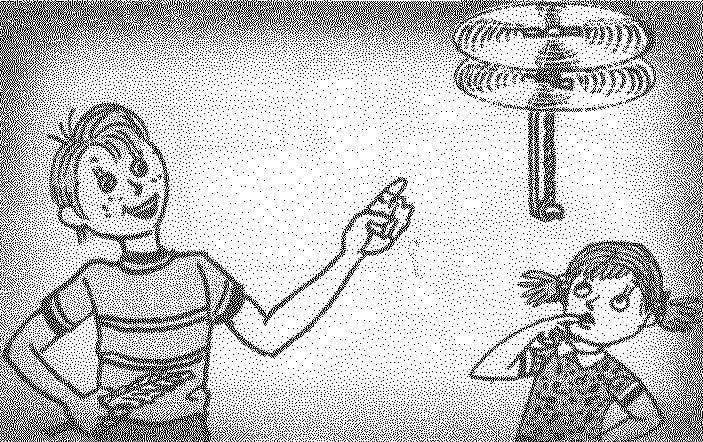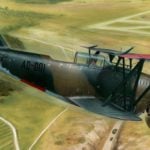 Among purchase toys that can move (ride, swim, run, fly, crawl), it is not easy to find such models that can be safely run in the apartment without fear that they’ll break, dropping to the floor, hurt themselves or broken in a collision with the wall or ceiling.
Among purchase toys that can move (ride, swim, run, fly, crawl), it is not easy to find such models that can be safely run in the apartment without fear that they’ll break, dropping to the floor, hurt themselves or broken in a collision with the wall or ceiling.
The exception is absolutely safe in this respect, the well-known children’s helicopter “mosquito”, designed to run in a confined space He flies through two rotating screws of soft goose feathers, so the impact on stationary objects it is very weak and soft.
The apparent simplicity of the device toys tempting for independent of its manufacture, but also difficult to direct its recurrence. However, technology can be greatly simplified and used for construction waste materials like scraps of plexiglass When heated, this material is easy to create the desired shape.
If not scraps, can be specially cut from a sheet of Plexiglas a narrow strip to get the rod square with a length of approximately 190 mm This is the frame design (see pic). The ends of the rod are bent so that the bottom formed a hook under the rubber motor, and at the top — the holder of the blade-pen. To the rod is easily bent, the bend on all sides to gently heat an iron or a Hairdryer (but not too much, to not have to breathe the fumes of Plexiglas).
From the top to the frame is glued unilateral pen holder from the same rod of Plexiglas To increase the strength of the connection both of them are drilled two holes with a diameter of 0.8 mm, in which the heated soldering iron is pressed two pins of the wire (e.g. paperclip). Between them drilled another hole under the axle screw, which rotates on a tubular spacer. The screw consists of a two-sided holder and a couple of feathers. The axis of steel wire with a diameter of approximately 0.5 mm; its upper end in the form of brackets welded to the cradle (using soldering iron) and the other, passing through the spacer and the lower screw goes in the form of a hook under the rubber motor and dressed “in a sleeve” (cut the wire insulation).
Between intended under the rubber motor hooks wound the five coils of rubber cord (e.g., model airplane rubber bands), the ends of which connect. The resulting elastic harness 10 tie lived near hooks and thread to prevent the attenuation length of rubber motor.
As the rotating blades of both propellers used goose feathers with a length of 25 cm (feathered part) and 5 cm wide (you can use feathers and larger). Thickened end of each of the pen cut so, to be able to wear it (slide) into the holder with the maximum tight fit. Inside the pen is Packed with a soft material, so it does not interfere — it can be cleaned out with a nail or wire

Toy helicopter “mosquito”:
1 — frame with a hook at the bottom(under the rubber motor) and a pen holder on the top end, 2 — rubber motor, 3 — axis upper screw with a hook (in PVC tube) underneath the rubber motor; 4,6 — holders of the feathers of the upper and lower screws; 5 — pins (2-piece), 7 — spacer; 8 —blade-pen
Feathers with a larger area (approximately the same) pull on the upper mounts of the screw: it will rotate in one direction and generate the main lifting force. A second pair of feathers pull to the holders of the lower screw, which will rotate in the other direction, providing vertical stability of the toy. It is desirable that these feathers were the same size.
Feathers usually have a slight bend to your plane, so you should pick them up and install so that this curve is pointing upwards (otherwise in-flight mosquito will roll).
Because during the flight a couple of feathers-vanes will rotate in opposite directions, this should be considered when installing each pair of the narrow edge of the tail should be directed in the direction of rotation. If the lower feathers will be with a large curve upward, the size of the spacers should be such that when rotating they clung to the top of the blade.
The angles of attack of the blades (i.e. the angles between the planes of the feathers and the plane of their rotation) are chosen experimentally, so that the spins in mutually opposite directions feather both propellers as if screwed up, forming a maximum lifting power For flying straight up, and not in a circle, the angle of attack of the blades of each pair may be different
During the flight, in collisions with fixed objects feathers can turn on the holders Therefore the place of installation should be greased with glue (but first to find the angles of attack for the best flight, making it outside to eliminate in-flight collision of feathers with stationary objects)
To facilitate construction at the ends of the holders feathers-can drill holes, and the diameter of spacers to reduce, giving it a shape of the coil.
In the factory rubber motor must be kept hand frame and the spacer and finger of the other hand to rotate the upper holder screws. Twisting, burning rubber forms pluginoptions turns. After they complete the entire length of the rubber motor windings appear in the second layer (the turns of the coils). The maximum plant — when the turns of the second layer will fill the entire length of the rubber motor (if rotating on — may break the frame or tear the rubber motor).
If you use feathers with large sizes, “mosquito” turned in flight, it is necessary to attach the load to the lower hook or extending rod-frame. Better to do it immediately when you use feathers in larger sizes. Then the plant will be greater as the rubber motor will take longer and therefore the longer it will stay “mosquito” in the air
SOLONIN, g. Konotop, Sumy region



